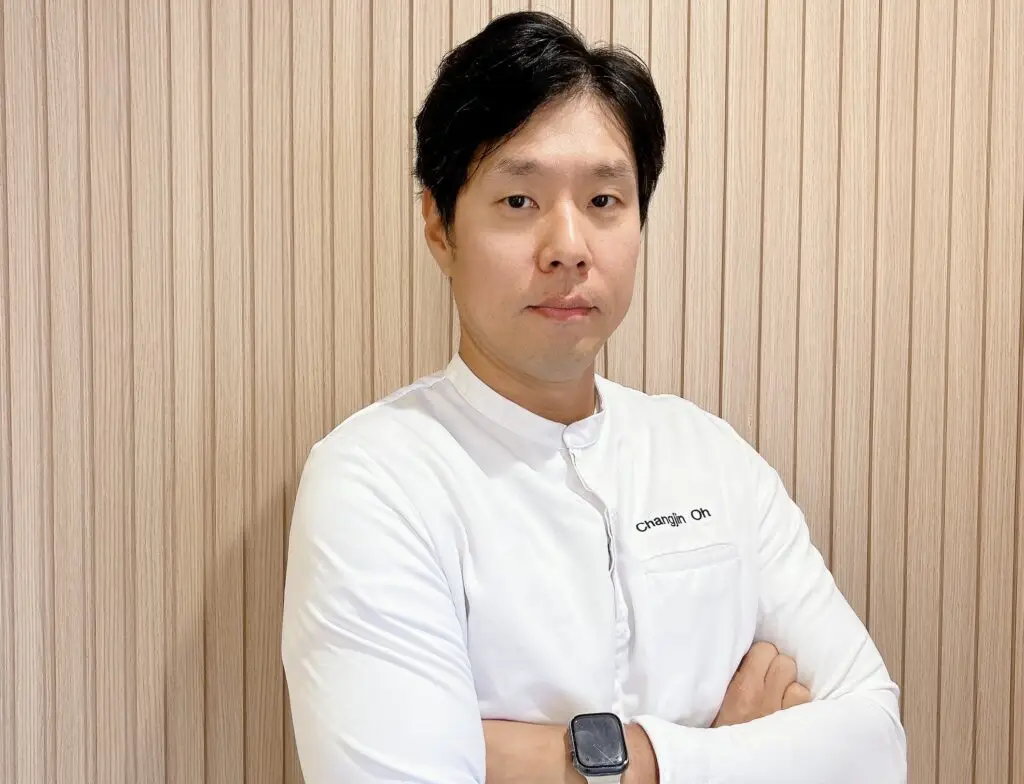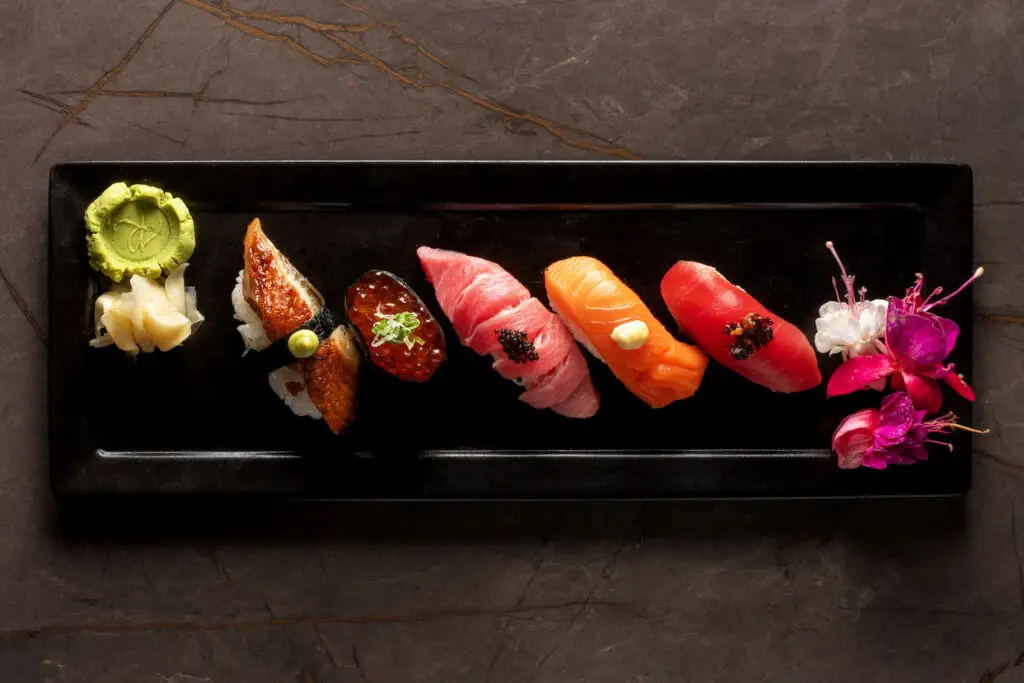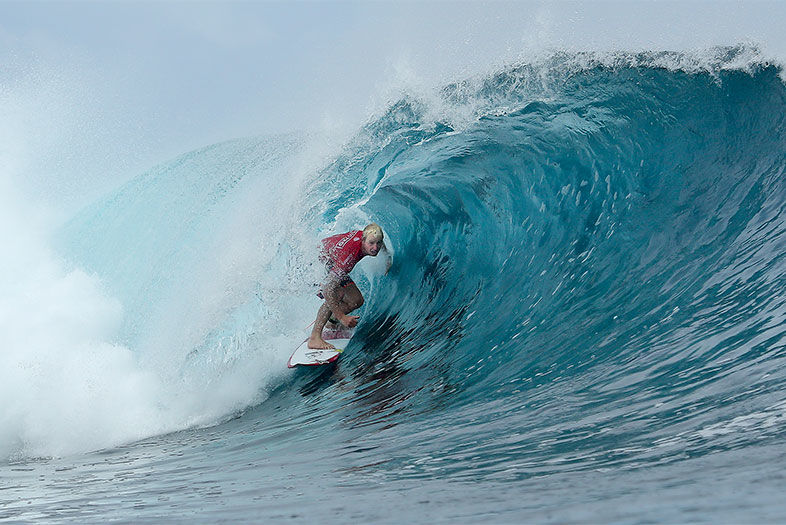It’s not about the destination, but the journey. Fernando Aguerre has learned to appreciate the truth of that cliché for 22 years. And now it seems his destination has finally arrived. The La Jolla resident, who founded the surf apparel company Reef with his brother, was elected president of the International Surfing Association in 1994. His goal? Get surfing into the Olympics.
“I thought it was going to be long,” he says, “but never 22 years. I never thought it was going to be such a long wave, and so difficult to catch.”
On August 3, the International Olympic Committee is expected to announce that surfing will make its Olympic debut at the 2020 games in Tokyo. You can find surf videos in every restaurant and bar along coastlines all across the world. But for the first time, the entire world of sports lovers—landlocked or otherwise—will witness the stoke.
Aguerre thought he had accomplished this 20 years ago, carrying on the work of former ISA president Jacques Hele, who initiated the Olympic campaigning.
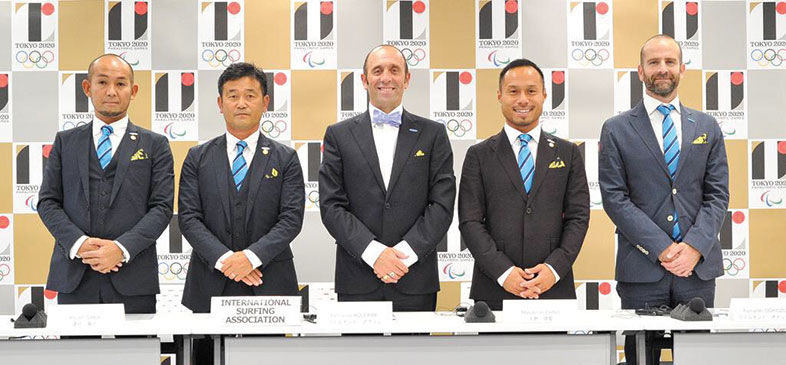
How Surfing (Finally) Made It into the Olympics
Aguerre (Center) and other surfing advocates present the case for Olympic Inclusion in 2020. | Photo: ISA/Ryo Ichikawa
Aguerre (Center) and other surfing advocates present the case for Olympic Inclusion in 2020. | Photo: ISA/Ryo Ichikawa
“When I was elected, I organized a trip to the IOC to meet the president. I took surfboards, books, and magazines to show them what surfing was all about. I made a donation of surf equipment to the museum. In 1997, the committee officially recognized surfing as a sport. I was so naive about the process. I thought we’d done it. I called and they said, ‘Oh no no no—you are properly recognized, but you’re not included in the Olympic program.’ And so started the longest battle of my life.”
Denied quick and easy access, Aguerre took the harder road. He and the ISA focused on developing surfing around the world. “The ultimate side effect could be Olympic inclusion,” he says, “but it wasn’t for that. I grew up in Argentina and I was in the water all the time. I moved to California and I continued to surf. I surfed this morning. I surf every day. I wanted to pass on this happiness to other people.”
In 2002, Aguerre and the ISA were told surfing wouldn’t be included in the 2008 Beijing games because they hadn’t met the minimum of 75 countries with “governing bodies” of surfing.
So he traveled across the globe with boards and surf gospel. In each country, he and members of the ISA paddled out with people who had never seen the sport before. The goal was to set up a surfing federation in every location. There were federations in obvious countries like France, Australia, and Brazil. The ISA also set them up in not-so-obvious surf spots, like Afghanistan, Israel, and ice-cold Norway. This June, the Iran Surfing Association was recognized as the ISA’s 100th member federation.
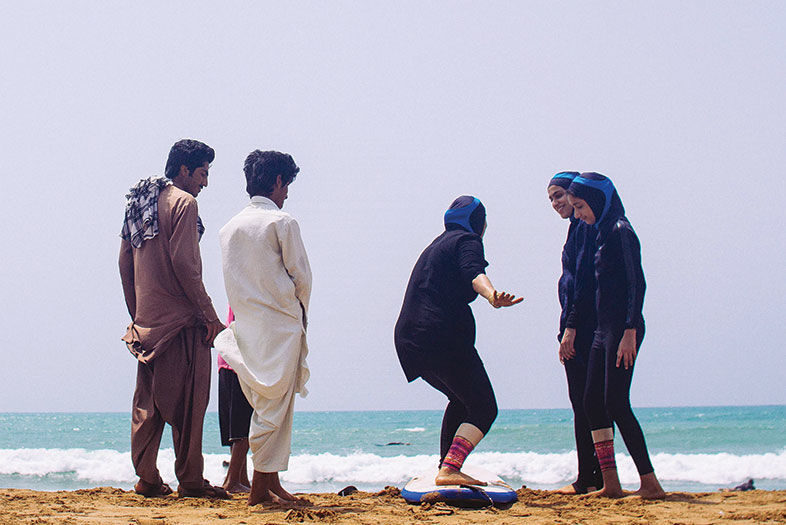
How Surfing (Finally) Made It into the Olympics
A surfing lesson in iran, the 100th member of the international surfing association. | Photo: IR Iran Surfing Association
A surfing lesson in iran, the 100th member of the international surfing association. | Photo: IR Iran Surfing Association
“It started in Iran six years ago by an Irish lady, Easkey Britton, and two Iranian ladies. And today, the association is recognized by the Iranian government,” he says, with audible pride. “They have a small coast, about 80 miles. But now there are both male and female surfers in Iran. That is the magic of surfing. The magic that I fell in love with as a little kid.”
Iran is not necessarily an easy country for an outsider to introduce a new sport. Britton wore a wetsuit, with her head fully covered to comply with Iranian law. “When Britton got to the beach, they had to trespass, because the ocean was literally fenced off for safety precautions. They went into the water with two former Olympic snowboarders from Iran. People started hearing about it, and suddenly the whole town was there. The religious leader came to see what was going on.”
In Iran, it’s forbidden for men to touch women during any type of instruction, surfing or otherwise. “But the religious leader said, ‘No, the Quran doesn’t have any restrictions on women playing sports.’”
And so Iran’s surfing culture was born, and captured in the documentary film Waves of Freedom.
“They said, ‘Oh no no no—you are properly recognized, but you’re not included in the Olympic program.’ And so started the longest battle of my life.”
Surfing’s path to the Olympics took 22 years for a variety of reasons. The committee expressed concerns about what would happen when future Olympics were held in countries without waves. Probably the biggest obstacle was their cap of 28 different sports allowed.
“That meant if a new sport came in, they’d have to kick one out,” Aguerre explains. “Even though there are some sports that are not very popular, or difficult to understand, they don’t want to get kicked out.”

How Surfing (Finally) Made It into the Olympics
Surfing legend Duke Kahanamoku in Hawaii. | Photo: Surfing Heritage Museum
Then in December 2014, the new president of the IOC, Thomas Bach, announced that the 28-sport cap was lifted, and that host cities could now request the sports of their choice. “Of course Tokyo selected baseball, because they love it,” says Aguerre. “And they chose karate, the biggest martial art. They also wanted to be more contemporary, so they chose the number-one urban youth sport, skateboarding, and the number-one outdoor sport, sports climbing [i.e., rock climbing]. And they chose surfing.”
Surfing as a spectator sport has a few limitations. First, surfers often have to be pretty far off the coast, where the waves are breaking. Second, the sport is dependent on ocean swells, which are largely unpredictable and sporadic. There are wave pools, but the technology was marginal at best, producing small, weak waves—until 2015, when 11-time world champ Kelly Slater and his team developed a perfect, sizeable wave in a man-made lake in Lemoore, California.
Not everyone is stoked about surfing’s inclusion in the Olympics. Very few sports are imbued with such a quasi-spiritual aura. It’s hard to talk about it without mentioning the word “soul,” which is why many of the world’s best surfers eschew the competitive side of the sport, like the World Surf League.
“It’s always been hard for me to understand judging surfing in any way, shape, or form. You’ll have judges from all over the world who know little to nothing about it,” says San Diego surf icon Eric “Bird” Huffman, who has fixed almost every San Diego surfer’s board at one time or another at his Bird’s Surf Shed off Morena Boulevard. “But that’s cool that it’s being held in the ocean and not a wave pool. There are so many surfers from all over the world now, from Italy to South Africa; even Nordic surfers are ripping. I don’t understand why they’d want to do it in the Olympics, but I like to see the recognition. It could benefit the entire sport in a lot of ways.”
Aguerre has heard the anti-competition argument before. But he points to the father of modern surfing, Duke Kahanamoku. “He was a fierce competitor, swimmer, volleyball player, and water polo player, and he won three gold medals,” he points out. “In 1923 he asked the IOC to include surfing. In his autobiography he said he believed one day surfing would be accepted and included in the games. And this was the soulful guy of surfing.”
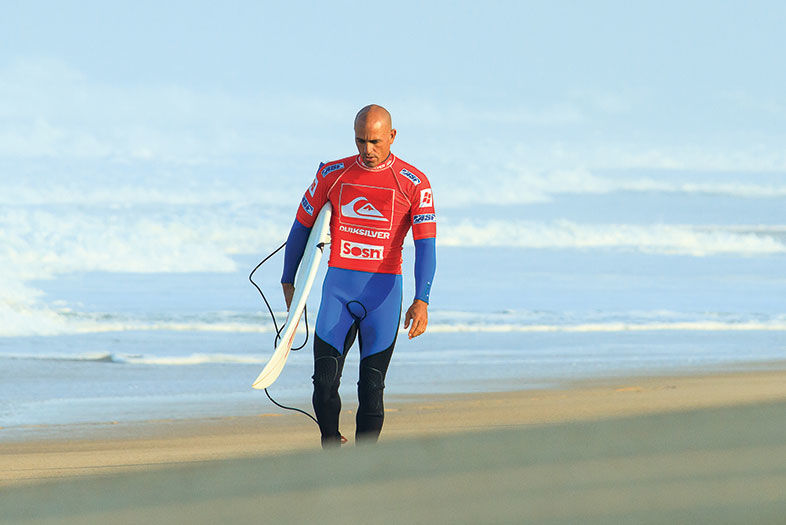
How Surfing (Finally) Made It into the Olympics
Famed surfer kelly slater will be 48 in 2020, but still hopes to compete. | Photo: Peapop / Shutterstock.com
Famed surfer kelly slater will be 48 in 2020, but still hopes to compete. | Photo: Peapop / Shutterstock.com
Others worry that surfing’s inclusion in the Olympics might make the waves even more overpopulated with surfers than they already are. But both Aguerre and Huffman doubt that’s possible, each citing bigger threats in foam boards at Costco.
Though obviously proud of surfing’s Olympic arrival, Aguerre repeatedly drives conversation back to the bigger picture. He believes surfing—which he defines as any kind of wave play, including bodyboarding and bodysurfing—is the most democratic sport in the world.
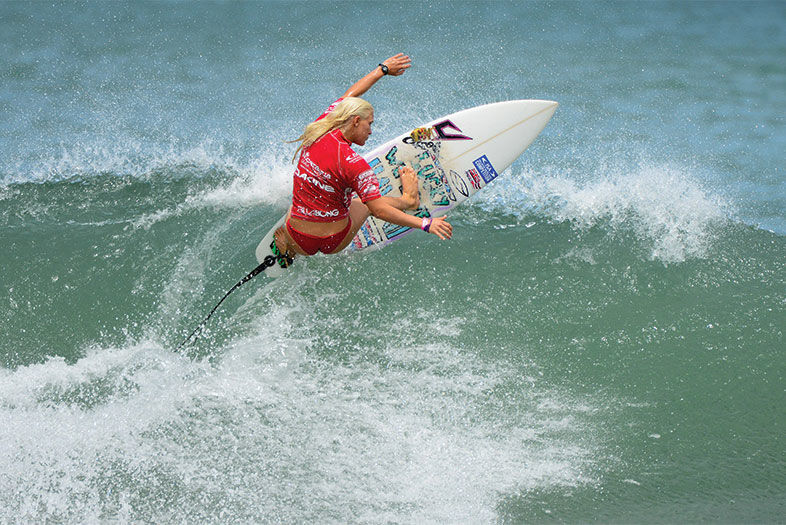
How Surfing (Finally) Made It into the Olympics
Tatiana Weston-Webb. | Photo: Michael Tweddle Rayner
“It’s available for all genders, all races, religions, socioeconomic levels. The ocean is the most democratic place in the world. Everywhere else, you need to pay a fee. The ocean is the ocean,” he says. “Most sports require an opponent to compete against. Tennis, boxing, all martial arts, team ball sports. Surfing and skateboarding, you can do that all your life and never be in a competition. That’s why it gained such a strong following and became a lifestyle. As society evolves, in the case of surfing, we are literally submerged in nature. It’s no coincidence that most surfers have become environmentalists: The ocean doesn’t have a voice. We are its voice.”
To that end, Scott Bass, host of surf radio talk show Down the Line and creator of The Boardroom International Surfboard Show, agrees. “I assume that more international exposure for surfing via the Olympics is a good thing for the health of our oceans,” he says. “For that reason alone, I’m a fan. Perhaps a naive fan, but a fan nonetheless.”
For centuries, talk about surfing has focused on its restorative, calming, even healing potential. Aguerre points to the naval base in Coronado. “There, they train former combatants who have come back with physical and mental ailments. Doctors at the naval base are prescribing surfing as a mental and physical cure for our warriors. In southwest France, there are hospitals prescribing surfing sessions for depression. So suddenly, it seems all those long-haired beach bums were onto something. I think not too long from now, many more people will realize that.”
The Olympics, then, in Aguerre’s eyes, are so much more than a pursuit of a gold medal. Speaking of which: Will 2020 be too late for the greatest surfer in the history of the sport, Kelly Slater, to compete? He’ll be 48 by the time the games come around.
“Kelly went on record to say he’ll compete if he’s in good shape.”
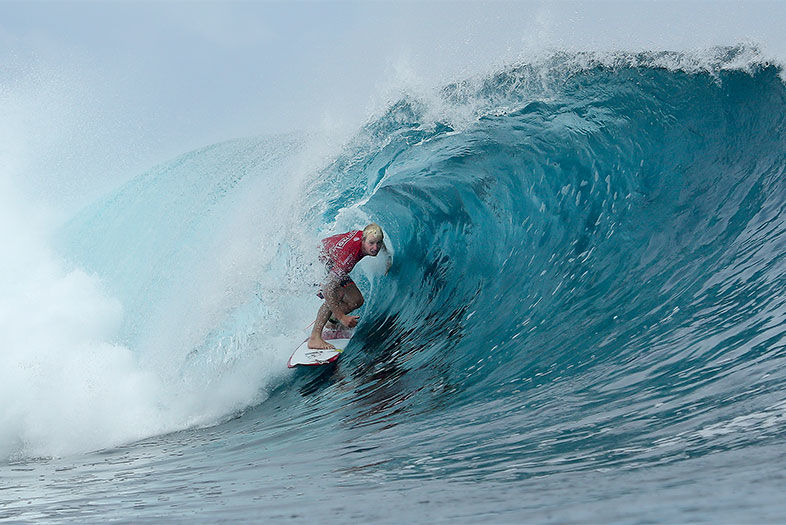
How Surfing (Finally) Made It into the Olympics
PARTNER CONTENT
Nat Young | Photo: WSL/Kelly Cestari
